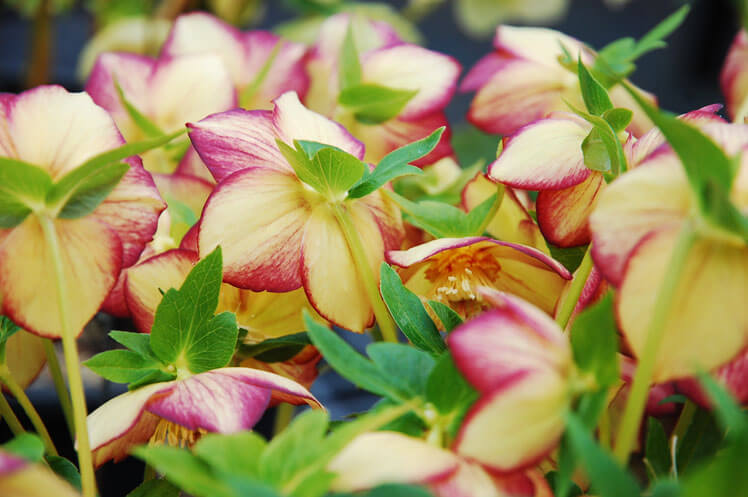
In mid-January, the Portland, Oregon metro area endured a horrid wind, ice, and snowstorm. Temperatures dipped below 15 degrees F and stayed below freezing for 4-5 days. The high winds caused many large Douglas Fir (Pseudotsuga menziesii) trees to come crashing down, sometimes on homes and cars, power lines snapped, and because of the ice, people could not leave their homes. Fortunately, within a week the weather changed, and temperatures went up into the 60’s. And with the milder weather, the cheerful hellebores (Helleborus x hybridus) have begun to defrost and bloom profusely.
Helleborus Withstand Winter!
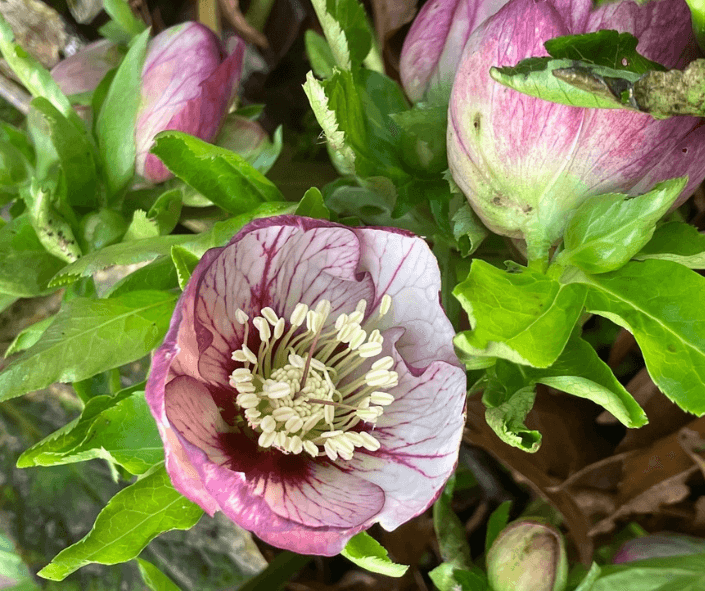
When I walked out into my garden during the cold snap, the ground was frozen and plants were covered in ice. The new growth and flower buds on the hellebores were frozen. I knew the plants would survive, but probably not the flowers. I was wrong, and I am glad I was! Just one week later, the Lenten roses looked as though nothing had happened. The new growth was emerging and flower buds are continuing to grow. Below photo taken on February 2, showing one of many flowers that have opened since the storm. Some of the foliage was damaged but new growth is emerging that looks just fine.
My Favorite Winter Jewels®
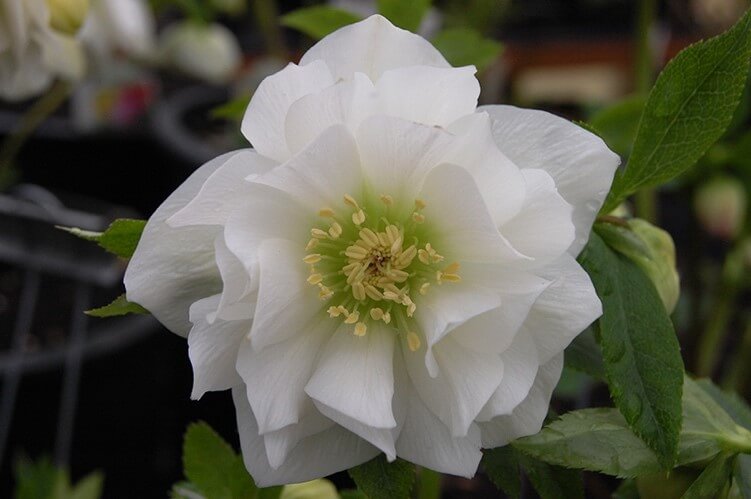
At one time, most hellebores in home gardens had single purple flowers, and the flowers themselves tended to nod downward. Newer selections are now available in lots of fun colors and the flowers are more upright and showy.
Northwest Garden Nursery in Eugene, Oregon has been one of the leading breeders of hellebores and has even introduced the popular Winter Jewels® Series, which are widely available in northwest garden centers. Many of their new introductions are double-flowered and look nothing like an old-fashioned hellebore, and some of the singles are available in spectacular new colors. Here are some of the prettier new offerings.
The following photos are courtesy of Northwest Garden Nursery.
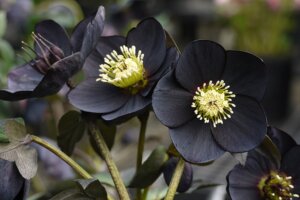 Black Diamond has a true black flower. Black Diamond has a true black flower. |
 Apricot Blush is a lovely new variety for gardens. Apricot Blush is a lovely new variety for gardens. |
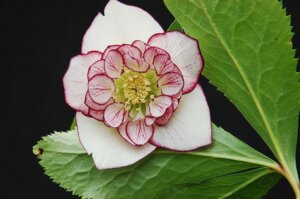 Picotee Pearl is a favorite! Picotee Pearl is a favorite! |
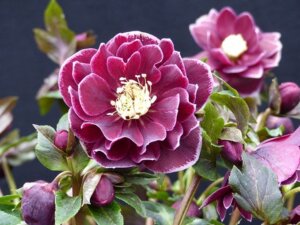 Amethyst Gem has upward-facing double blooms. Amethyst Gem has upward-facing double blooms. |
 Double Painted has spectacular markings. Double Painted has spectacular markings. |
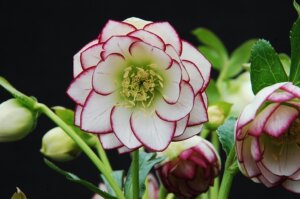 Fire and Ice is clear white with a red edge. Fire and Ice is clear white with a red edge. |
Helleborus Care
 Hellebores like well-drained soil amended with plenty of organic matter. Black Gold Natural & Organic Garden Compost Blend is an ideal soil amendment. The plants like some shade, especially in the summer. An area with morning sun would be ideal. They tend to naturalize and are often planted under shade trees. I think that they look their best when planted in large groupings. For comprehensive Helleborus care instructions, click here.
Hellebores like well-drained soil amended with plenty of organic matter. Black Gold Natural & Organic Garden Compost Blend is an ideal soil amendment. The plants like some shade, especially in the summer. An area with morning sun would be ideal. They tend to naturalize and are often planted under shade trees. I think that they look their best when planted in large groupings. For comprehensive Helleborus care instructions, click here.
For those gardeners with limited space, try growing hellebores in containers using Black Gold Natural & Organic Potting Mix. Growing hellebores in containers allows gardeners to move the container to an entryway during peak blooming season. Their flowers can provide a very cheery welcome on a winter day.
The photo below shows the wide range of colors that are now available in garden centers. Check out your local garden center now for blooming plants. This is an excellent time to plan, and selecting plants in flower can ensure your choice is the color and style of flower that you want.
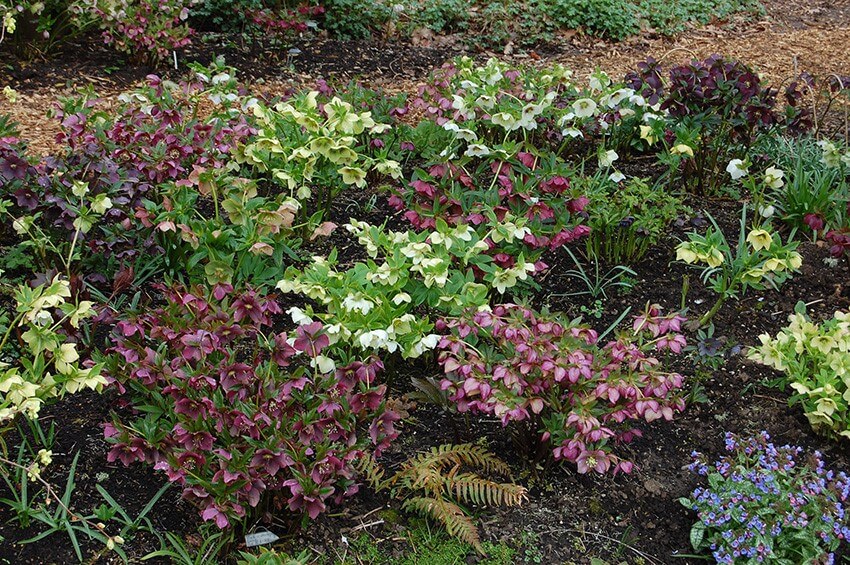
I can think of few plants that give gardeners such a variety of early spring colors that hellebores do. They are so easy to grow with minimal care. February is a good month to remove the old leaves, being very careful not to cut any new growth or flower buds. Flowering begins in February, sometimes earlier, and often continues through April.


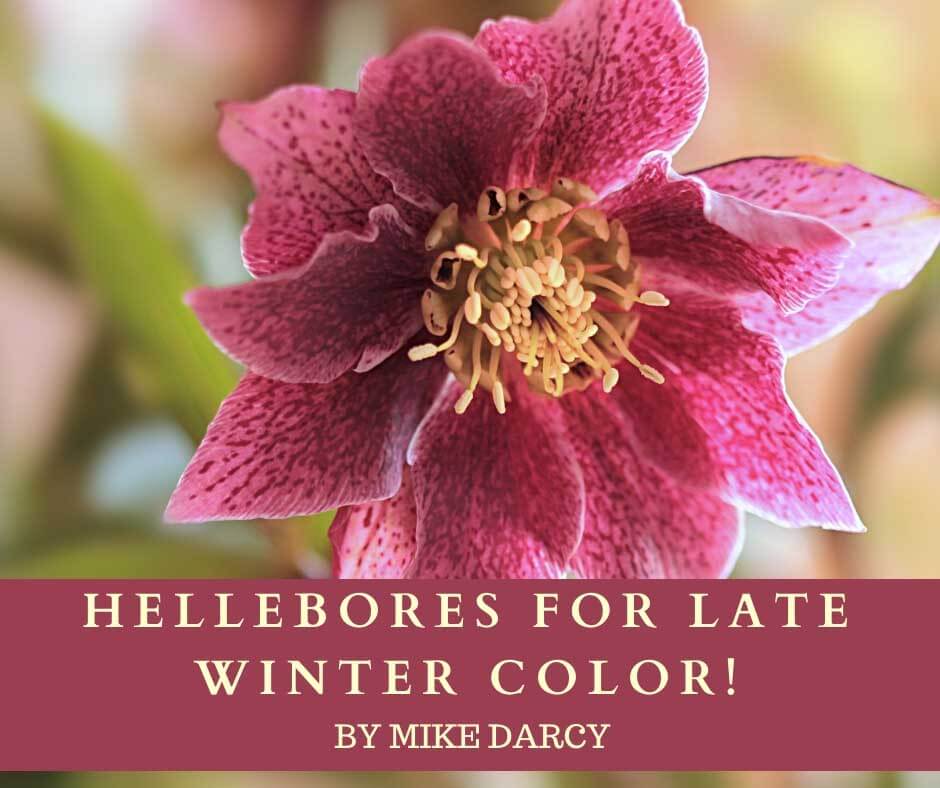
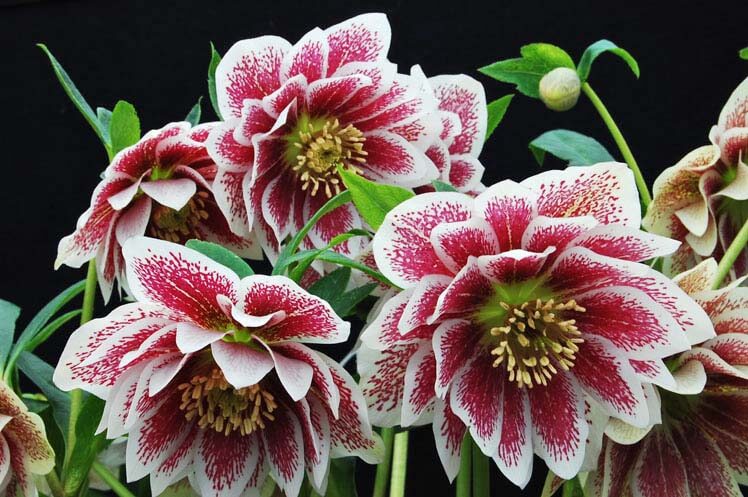
 tend to face forward instead of downward, as many Hellebores do. It will begin flowering in January and continue for at least two months. It makes an excellent container plant, especially by an entryway, as the early blossoms provide winter cheer.
tend to face forward instead of downward, as many Hellebores do. It will begin flowering in January and continue for at least two months. It makes an excellent container plant, especially by an entryway, as the early blossoms provide winter cheer.